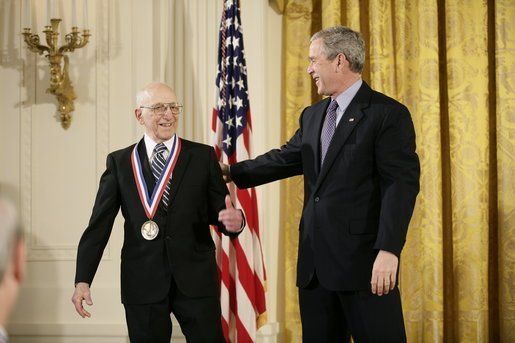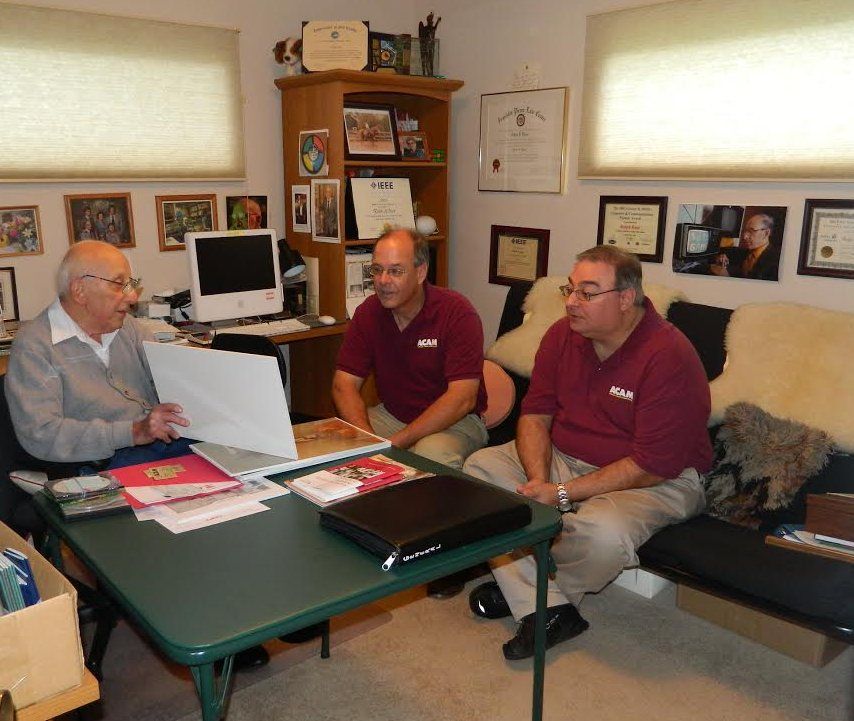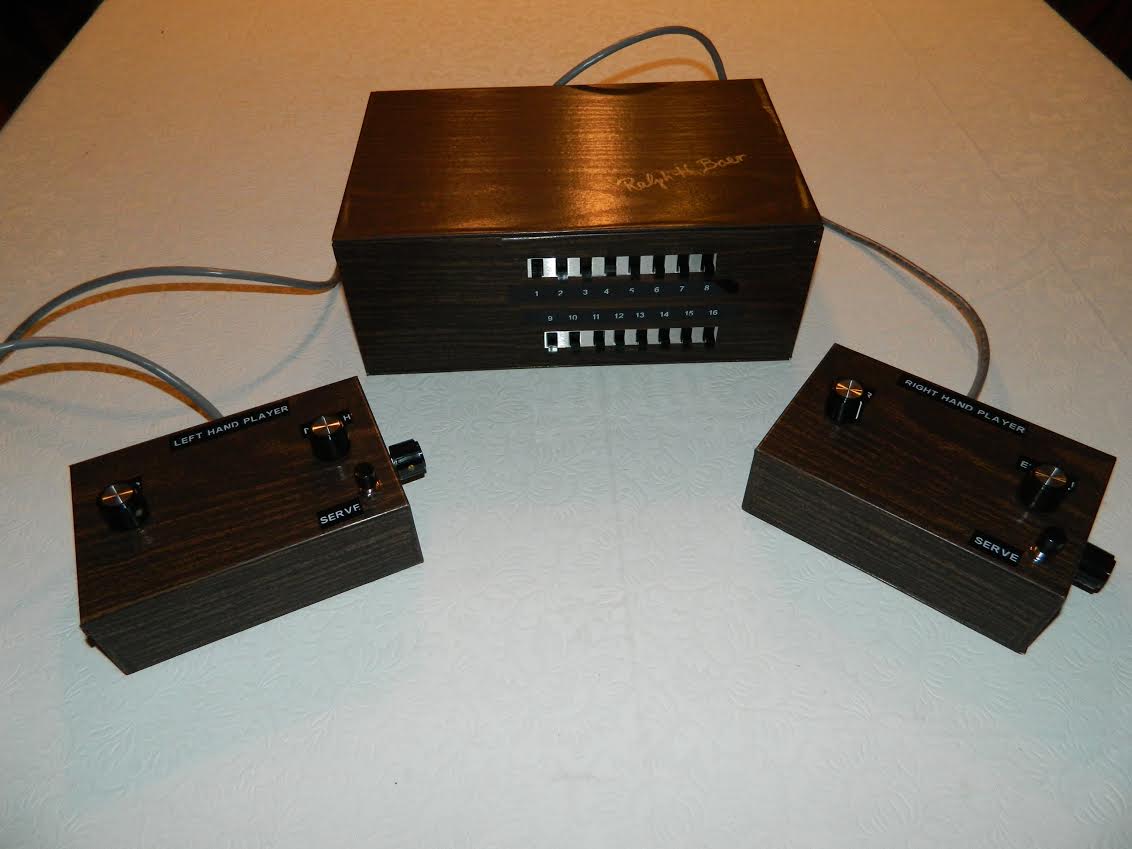The Birth of Video Games
The Birth of Video Games
By Mike Stulir, Vice President, The American Classic Arcade Museum
Story contributions by Ralph Baer
Story contributions by Ralph Baer
There is a question that I am asked frequently when doing ACAM marketing and business planning. It never fails that while speaking to video game industry people or to the press, I am asked: “Why put a videogame museum in New Hampshire? Wouldn’t New York or California be better?”
My response is always the same: “Videogames got their start in New Hampshire.”
Something a lot of people tend to forget is exactly how much game development has taken place in New England. In fact, all video game development has its roots in the first video game console….a device that was developed in New Hampshire….just a stone’s throw away from ACAM’s location. In the early 1950s, electronics engineer Ralph Baer had an idea that televisions could be used for more than just watching TV shows. Over the course of many years, his ideas matured and in 1966, he began work to see those ideas come to life. By the end of 1968, Ralph & his small team of one technician and one engineer had developed what would become the Magnavox Odyssey – the first video game console. Released in August of 1972, the Odyssey was the catalyst that started the video game console industry. Magnavox sold over 350,000 Odyssey game systems, and over 80,000 of the optional light gun accessory.
So who is Ralph Baer? Ralph was born in Germany on March 8th, 1922, and escaped Nazi Germany with his family for the United States in 1938. He was part of the US military during World War II serving in France as part of General Dwight D. Eisenhower’s intelligence HQ, which was located in London, England.
Upon returning home from the war, Ralph enrolled in the American Television Institute of America and graduated with a Bachelor of Science degree in Television Engineering. That led to a series of jobs including his time as the Senior Engineer of Loral Electronics and the Vice President of Engineering at Transitron, Incorporated. In 1956, Ralph joined Sanders Associates, a large defense contractor located in Nashua, NH, where he became the manager of the Equipment Design Division.
During business trips to New York in 1966, Ralph had been jotting down notes on his ideas for playing games on a TV set. On September 1st, 1966, Ralph organized those notes and wrote a 4-page hand-written disclosure document with an outline of playing games on a TV. Ralph also created a basic schematic on September 6th, 1966. That schematic showed how to display “spots” on a television screen. Ralph’s idea was called “Chase Game” and the idea was to have the players move the “spots” around the screen via vertical and horizontal control knobs while avoiding each other, as in a form of tag. Demonstration of a basic game device that played a chase game and a lightgun game was demonstrated to Sanders management in December of 1966; it resulted in a less than generous budget of $2,000 for labor and $500 for parts to continue development.
ACAM staff visits with Ralph Baer in his home lab on August 16th, 2014
Ralph Baer and technician Bob Tremblay spent some time in the winter of 1966-1967 coming up with ideas for different types of games that would be appropriate for play on a television. Those ideas included a number of skill games, and a “Fireman” game. Later, Engineering Associate Bill Harrison and Engineer Bill Rusch joined the team and were instrumental in developing the prototypes and various light gun attachments.
Ralph Baer is awarded the National Medal of Technology by President George W. Bush on February 13th, 2006
Over the course of two years, a number of prototype TV games were built featuring different gameplay mechanics and control schemes. TV game unit #6 was where everything started to come together. However, immediately after its completion, a discovery was made that would allow the creation of several additional games with very little additional circuitry. Work was started immediately on TV game unit #7.
The seventh prototype device was known as the Brown Box. The name came from the wood-grain shelf paper that Bill Harrison used to make the prototype unit look a little better. The unit has seven games:
- Ping Pong: A player on either side of the screen hits the ball back at the other player. A central vertical line on the screen represents the net. An English control is used to determine the ball's vertical rise or fall after it leaves a paddle. It is that control and the game's speed control that makes the Brown Box' ping-pong into a challenging game.
- Handball: With a wall on the left side of the screen, players alternate hitting the ball back at the wall or try to take the ball away from the opponent.
- Hockey/Football/Soccer: Ping pong with no net graphic but with a colorful screen overlay.
- Target Shooting: Used with the light gun attachment to shoot at stationary or moving targets on the screen.
- Checkers: Used with a screen overlay.
- Putting: Used with the golf ball joystick controller & a real golf putter. The player uses the golf club to putt the ball controller sitting on the floor. The action of the putter hitting the ball results in the ball on the screen rolling across the putting green towards the hole.
- Volleyball: Ping pong with a sideways perspective.
Sanders Associates (now BAE) was a defense contractor, and had no real idea of what to do with Ralph’s invention. Decisions about how to proceed were left in the hands of Ralph and Lou Etlinger, the company's Director of Patents. They decided to license the technology to a company willing to do the manufacturing, distribution and support of the game. Ideally, the most logical licensees were TV manufacturers. Back in that era, virtually all TV sales was done through dealer showrooms since there was no such thing as big-box electronics stores like “Best Buy” at that time. The Brown Box was shown to TV set manufacturers like GE, RCA, Warwick, Philco, Emerson, Motorola and many others. RCA was the only company that started the process to license the technology, but discussions fell apart after several months. Fortunately, one of the people involved in these discussions, Bill Enders, took a job at Magnavox and got that company interested in the concept of TV games.
Ralph Baer (L) talks about a future exhibit of his inventions at the Smithsonian Museum with ACAM President Gary Vincent (C) and ACAM Vice President Mike Stulir (R) on August 16th, 2014
Ralph, Lou Etlinger and Bill Harrison went to a Magnavox facility in Ft. Wayne, IN and demonstrated the unit to a room full of Magnavox management and engineering folks. While the reaction in the room seemed underwhelming, Magnavox executive Gerry Martin was impressed. Eighteen months of discussions and legal wrangling occurred before a preliminary agreement between Sanders Associates & Magnavox was signed in early 1971. Magnavox initially wanted to call Ralph’s invention by the name “Skill-O-Vision,” but by the time manufacturing had begun in 1972, the name “Odyssey” was used.
Ralph Baer visits ACAM in 2007
When the Odyssey was released in August of 1972, some additional games were created. Even more games were available as add-on packages. Initially, there was some confusion as the marketing materials and TV ads implied (but did not directly state) that the Odyssey would only work with Magnavox TV sets. It has long been thought that fact may have hurt overall sales. Yet, the game did sell over 350,000 units, and was responsible for launching the video game console industry.
All historical photos courtesy of Ralph Baer
ACAM Receives Final "Brown Box" Replica
The original “Brown Box” TV game prototype is part of a massive collection that Ralph Baer donated to the Smithsonian American History Museum in Washington, D.C. In July of 2015, the Smithsonian plans to open the first section of a newly renovated exhibit hall dedicated to the history and innovation of American business. In the new innovation hall, the museum will feature important inventions from history including Ralph’s prototype collection and his entire basement workshop.
Over the years, Ralph constructed a handful of replica units for use in other museum facilities such as the Tokyo Science Museum in Japan and Computerspiel in Germany. In the spring of 2014, Ralph constructed his final replica for ACAM to use in our education program for college students pursuing a career in video game development.
ACAM is proud to be part of this small fraternity of museum facilities displaying the work of Ralph and his engineering team that developed the “Brown Box” technology.
U.S. Mail
American Classic Arcade MuseumPO Box 5533
Weirs Beach, NH 03247
American Classic Arcade Museum
Weirs Beach, NH 03247
G.P.S. Location
American Classic Arcade Museum579 Endicott Street North
Laconia, NH 03246
American Classic Arcade Museum
Laconia, NH 03246
Hours
Monday-Friday 12pm - 10pm
Saturday & Sunday 10am - 10pm
Holiday Hours
Closed Thanksgiving, Christmas Day and Easter Sunday
Christmas Eve 10am - 5pm
New Year's Eve 10am - 9pm
New Year's Day 10am - 10pm
Snow closures possible during inclement winter weather
© Copyright
American Classic Arcade Museum.
All rights Reserved.
The American Classic Arcade Museum is a non-profit organization.
Website by
Clover Creative Group








